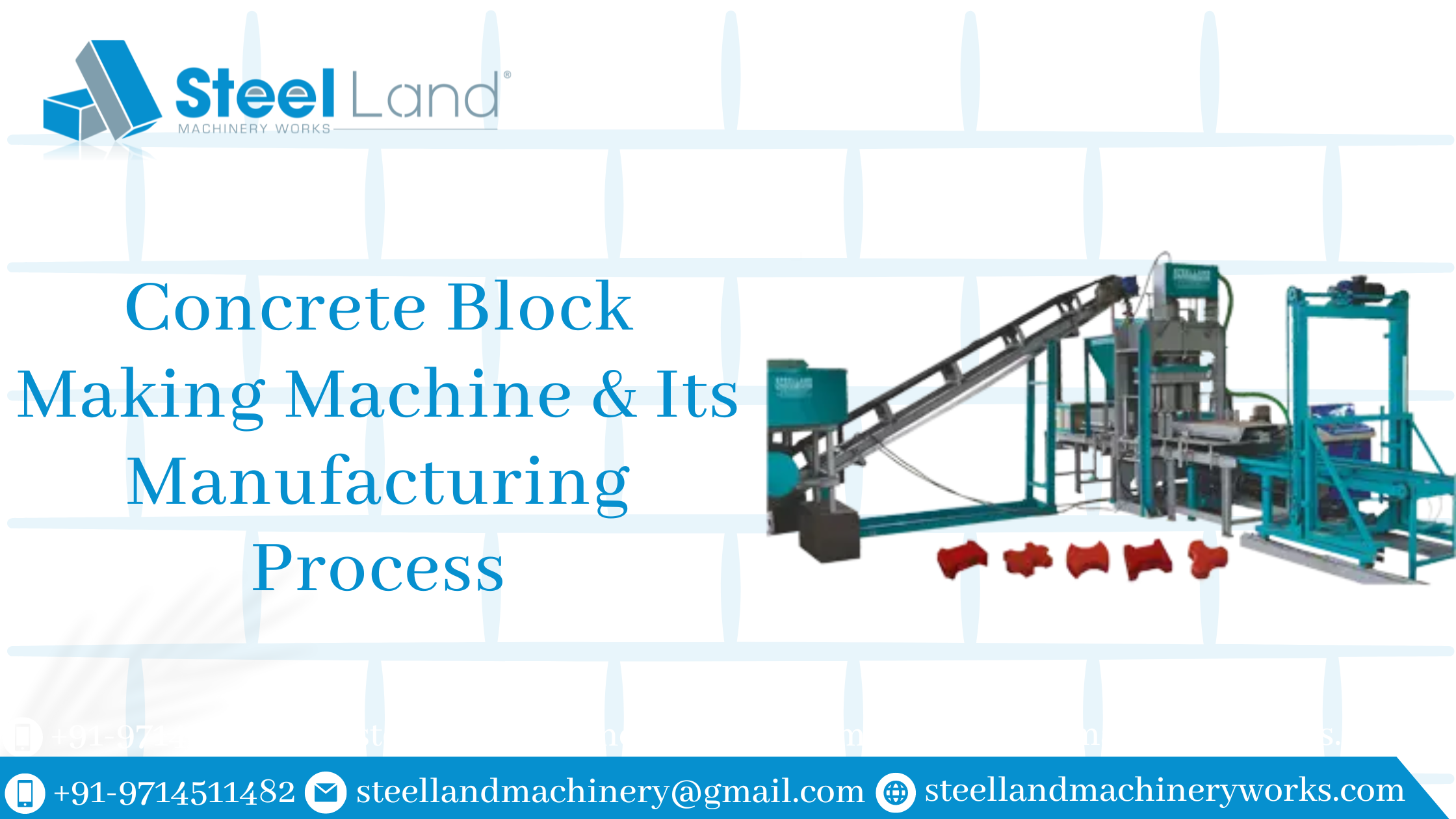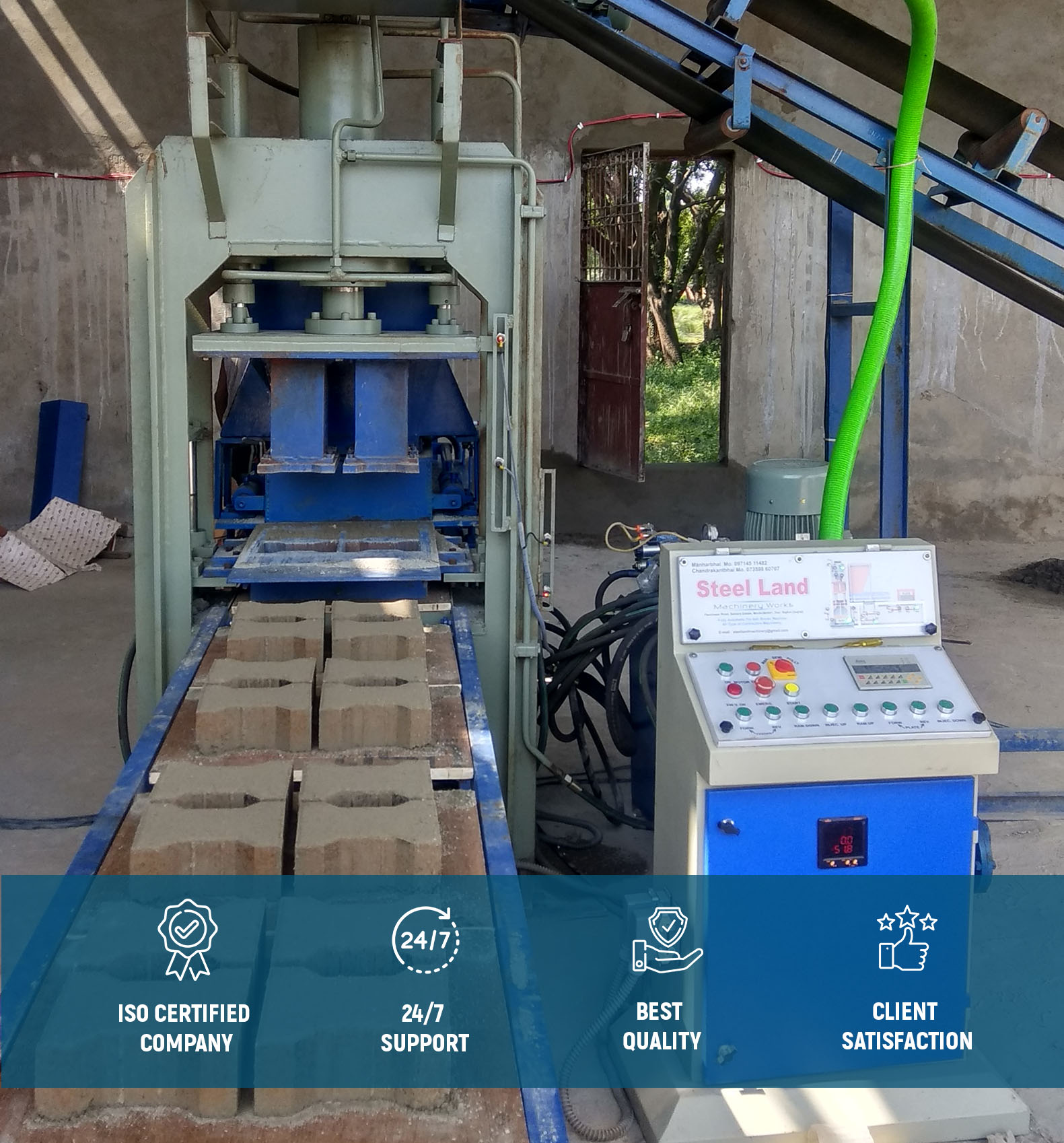A concrete block machine is a piece of machinery intended to create concrete blocks with different features and dimensions. From the initial concrete block machines, which were confined to basic metal moulds where the mixture was created spontaneously, to the machines we have today that carry out every function automatically, the technology has advanced tremendously. Besides providing the maximum production levels. Concrete block making machine manufacturers make different types of machines with different sizes and capacity and you can choose what suits best to your business.
Manufacturing Process of Concrete Blocks
Concrete blocks go through 4 basic process before they are manufactured which are:
Mixing
Using a conveyor belt, sand and gravel are moved into storage bins. Large vertical silos are typically used to store Portland cement; this keeps it dry. The first step in the production process is the transfer of the required amount of raw materials (sand, gravel, and cement) into a weight batcher, either mechanically or by gravity (this assures exact measure of each material).
The mixture is blended for many minutes using a stationary mixer. A planetary mixer and a pan mixer are the two different kinds of mixers. After blending is finished, a mixer is filled with water. But water temperature does matter, so they might need to utilise a heater or a chiller if severe weather is an issue. In addition to using colouring pigments or admixture chemicals, this is combined for six to eight minutes.
Moulding
After mixing, material is placed into an inclined conveyor belt for concrete blocks and moved in an elevated hopper. The cycle of mixing resumes after the transfer. Concrete is fed into a second hopper in a controlled manner. After that, concrete is pushed into moulds using a block machine. The mould box has multiple mould liners on the outside.
The liners define the inner and outer shapes of the block cavities and the block’s exterior. To get rid of any loose material, compact blocks are put into a flat steel pallet and then placed onto a chain conveyor that passes beneath a revolving brush.
Curing
Block pallets are transferred to an automatic stacker and then set aside on a curing rack. Each rack can accommodate hundreds of blocks. A set of rails is made for transferring into a curing kiln once the rack is filled. A kiln is often a low-pressure steam kiln with room for multiple racks. Blocks are left in the kiln at room temperature for up to three hours in order for them to solidify.
Steam is progressively added to the mixture during the up to 24-hour curing process to raise the temperature. The steam is turned off once a predetermined temperature is attained, and the blocks are then left to soak in the heat and moisture. After that, they must be dried by increasing the kiln’s temperature.
Cubing
Pallets of blocks are unstacked and transported out of the kiln onto a chain conveyor, together with the racks of cured blocks. Afterwards, these are removed from a steel pallet, and the empty pallets are fed into the block machine to be replaced with fresh moulds.
If split-face blocks are possible, the method is to mould two blocks together, cure them, and then run them through a splitter to break them and give one side a rough, stone-like texture. After each block is aligned, a cuber stacks them into a cube that is three blocks high, three blocks wide, and six blocks deep. After that, a forklift is used to move them outside and store them.



